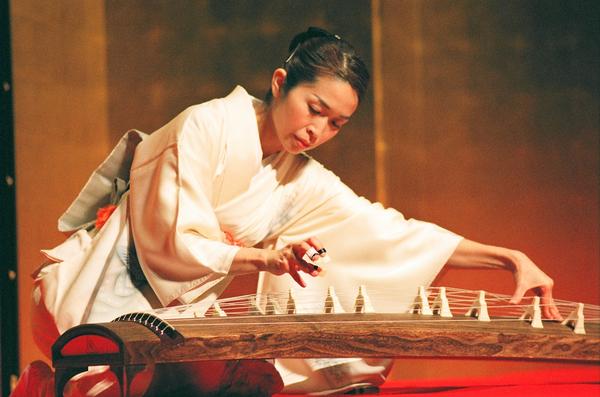
The Koto is a stringed instrument with more than a thousand years of history in Japan. A standard koto has 13 strings, but the first koto had only five and was about one meter (three feet) long.
The instrument is played with the small plectrums of the thumb and first two fingers of the right hand (the left hand can raise the pitch or change the tone in the meantime).
Certainly not a portable instrument but with a unique elegance of its kind

The body of the instrument is made up of a sound box, about two meters long and between 24 and 25 cm wide, generally built with Paulownia (Paulownia Tomentosa or kiri, in Japanese) wood. Thirteen strings of the same diameter and having the same tension run on it, each of which rests on a movable bridge (ji, 柱), these strings are played with a plectrum similar to a fingernail. The koto is compared to the body of a reclining Chinese dragon. For this reason, the different parts of which it is made up take on names that recall those of the mythical animal, such as:
- Ryuko (dragon’s back): it is the upper part of the sound box,
- Ryuto and ryubi (dragon head and tail): These are the ends of the instrument
A brief taste of this instrument in:
Nanae Yoshimura – The Art of Koto Vol. 1

Download, listen, create with the available samples: